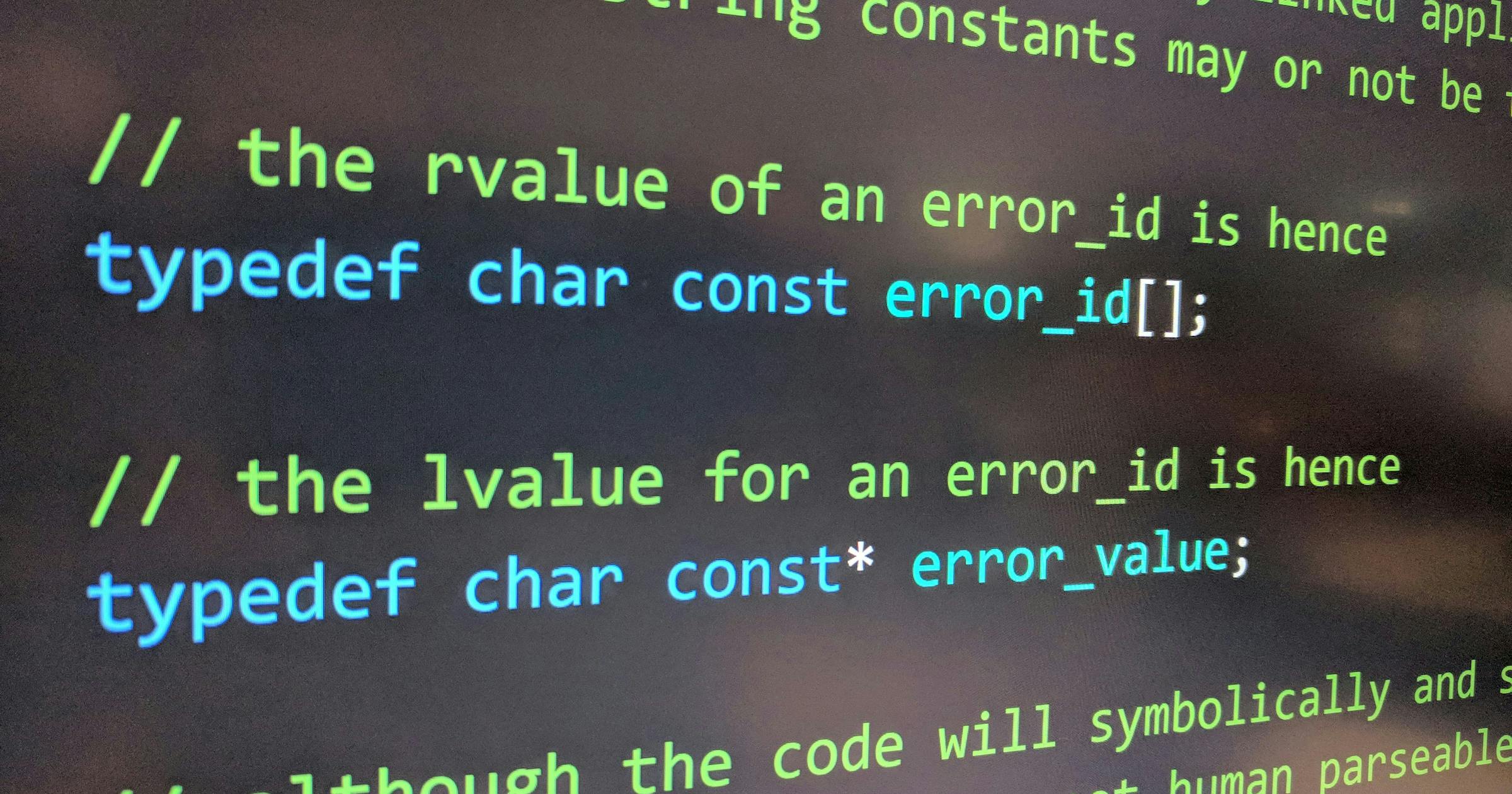Are you looking for the best ATS?
Of course you are. Everyone wants the best.
But imagine you’re a restaurateur. Your sous chef turns to you and says, “Gordon Ramsay’s the best cook in the world; we should hire him”.
Problem is, you only own a little corner bistro.
“The best” might not always be the best for you.
In business, what’s best for a huge multinational might not be what’s best for a startup. Especially when it comes to recruitment tools.
Startups might not have a dedicated talent acquisition team. Job specs can change in an instant. They won’t have the same employer branding to attract applicants.
In fact, nearly 98% of Fortune 500 companies use an ATS1. The stats for startups are more ethereal, but it seems far fewer use recruiting software.
Simply, their needs are very different.
That’s why we’ve put together a list of what we believe are the best applicant tracking software for startups specifically.
We’ll also give you the questions to help you decide which software is best for you based on your needs.
Table of Contents
- Benefits of Using an ATS for Startups
- Key Features to Look for in the Best ATS for Startups
- Top ATS for Startups in 2025
- How to Choose the Best ATS for Your Startup
- FAQs
Benefits of Using an ATS for Startups
So if startups are so different to all the multinationals with their dedicated ATS, how can we be sure they need ATS at all?
Would they not be better placed holding on to their ATS money?
Unless you’re going to outsource your recruitment to a third party – which is an entirely viable option – the answer is, frankly, no.
A quarter of startups fail because they hire the wrong people.
Yet surveys suggest using ATS can result in greater candidate quality and shorter time-to-hire for most users.
There’s also:
- improved retention rate
- lower cost-per-hire
- better candidate diversity.
And while everyone can benefit from these things, startups especially will.
We’ll look at why in the next section.
Key Features to Look for in the Best ATS for Startups
With any ATS, you want to evaluate the major features. How easy it is to use – to post jobs, source candidates, and manage roles. Then things like how well it collects data and reports on it. That’s just what an ATS does.
But with startups, there are specific hiring challenges that make certain ATS functions matter more.
This section will look at the key features to look out for in an ATS to help you overcome those struggles:
Startup struggle | ATS feature(s) to beat it |
Attraction: More than a third of startups struggle to find talent.4 | You’re looking at something that’ll help you market your vacancies, whether that’s job ad templates or automated advert posting. You’ll also want a way to create a talent pool of potentially suitable applicants. |
Slow time-to-hire: While startups can be more flexible than some bigger companies, there’s also the fact that recruitment can be a secondary concern behind actually running the company. There may not be a dedicated person to screen applicants, which can increase time-to-fill. In turn, this can mean quality candidates get snapped up by faster-moving opportunities. | Automatic CV screening and interview scheduling features can help improve recruitment speed. Any other workflow automation, like email autoresponses, is also a plus. |
Greater risks when mis-hiring: It’s easier for larger companies to absorb the sunk costs of a poor-quality hire. It’s far more critical for startups to get things right first time. | Any features that can improve quality of hire, like the ability to add pre-screening questions or track interview performance and feedback to reduce bias, can help make sure you get the right person. |
Poorer candidate experience: Without an established, standardised candidate journey, the applicant experience could be a bit erratic for startups. | Any ATS that can streamline the application process for users – like extracting data from a resume without them having to enter it - will create a better experience. Automated comms for feedback and updates are handy here as well. |
Lack of data for decision-making/prediction: Big businesses will have reams of data they can extract insight from, which is tremendously useful. Startups won’t – or at least, they won’t have their own yet. | This is where analytics and dashboards come in. Predictive AI can also be very helpful, especially as you grow. |
Need for scalability/flexibility: An established business wouldn’t need to change its processes after growing by 10 people; they’d barely notice it. But it could double the size of a startup, and transform the way they operate. The ability of an ATS to scale to company size and adapt to changing processes is, therefore, crucial for startups. | Custom workflows, scalable pipelines, and being integration-ready with other tools supports both your early-stage hiring and any rapid scaling phases. |
Smaller budgets: Might go without saying, but startups may not have the financial heft of multinationals. | Reasonable price and value for money |
Top ATS for Startups in 2025
So, with those considerations in mind, here’s our picks for this year’s best ATS for small businesses.
NB. We’re getting our info from company websites, user reviews, and Miguel’s own experience. Let us know if you’d like the raw data – and if you’re actively choosing an ATS, you should. It’s very in-depth.
Ashby
- Key features / USPs: All-in-one hiring platform – does pretty much everything. Combines ATS, CRM, scheduling, and analytics in one tool. Highly customisable workflows, strong automation, and deep reporting capabilities.
- Pros: Scrapes job experience really well. Strong on sourcing, managing roles, and analytics. Loved by users for saving time and reducing tool sprawl.
- Cons: It’s not perfect at integrating with LinkedIn, though there is a Chrome extension workaround. Some users have said it’s tough to understand initially. Pricing can be steep.
- Pricing: Starts at $300 per month for up to 100 users on the basic plan. It scales with company size, but there’s no implementation fee.
- Best for: If you’ve got the money, you’re fairly tech-savvy, and you plan to grow fast, Ashby could be for you. It gives you robust data, automation, and one-stop-shop hiring tools.
Workable
- Key Features / USPs: Workable’s your cheaper, simpler ATS. It gives you a drag-and-drop branded careers page builder, basic reporting, candidate search functions, and a customisable dashboard. It’s also introducing some AI features.
- Pros: Not too costly, and because it doesn’t have the broadest range of functionality, it’s fairly easy to use. It does give you some integration with tools like Slack and Deel.
- Cons: It’s quite bare bones. Reporting and customization are weaker than, say, Greenhouse and Ashby. The core AI features are still in beta and can be inconsistent. Lacks built-in video interviewing and advanced collaboration tools found in leading platforms like Lever
- Pricing: The starter plan’s about $249 per month for up to 20 employees, with commensurately more expensive tiers up to the “Premium” for 500+ users, which will set you back roughly $679 per month. No implementation fee either.
- Best for: If you’re starting out, aren’t too technical, and have relatively light hiring needs, but still want a base to build from, Workable might be a reasonably inexpensive option for you.
Lever
- Key Features / USPs: A midweight ATS/CRM hybrid. Gives you robust job posting options, decent sourcing and role management, and broad integrations.
- Pros: As far as the candidate journey goes, Lever’s very strong. Has everything you need for job ads, role management, interview feedback, etc. It’s nicely customisable too.
- Cons: The reporting and experience management need work. It’s not the best at finding candidate emails either. The pricing may be steep for early-stage startups. Some have said the support quality is inconsistent.
- Pricing: You’re looking at about $600 per month for basic usage, scaling up if you have 100+ staff. There’s a $2,000 implementation fee, but you do get to talk through everything with the reps.
- Best For: Startups in “scale-up” mode, especially ones with some hiring budget and dedicated recruiting capacity. It’s good for building talent pipelines and engaging passive candidates.
Greenhouse
- Key Features / USPs: A bells-and-whistles option – powerful, enterprise-grade ATS. Pretty robust across the board.
- Pros: Job posting and sourcing are great (though LinkedIn can be iffy for job posting). Strong at role management and excellent in terms of interview feedback. High user satisfaction for reporting and reliability.
- Cons: Can be expensive and complex to set up; it’s less suited to smaller or newer startups. Some users have bemoaned UX limitations and analytics frustrations.
- Pricing: You’re looking at around the $700-800 per month mark. There’s tiered pricing, with “Essential”, “Advanced”, and “Expert” plans. There’s an implementation fee of about $500, but you get a demo beforehand.
- Best For: Scale-up startups (especially those with some recruitment process maturity). If you want deep hiring process control, reporting that helps you build for the future, and a comprehensiveness that competes with enterprise-level hiring.
Recruitee
- Key Features USPs: A mid-tier ATS focused on team usage rather than individuals. It’s highly collaborative and customisable, offering unlimited users, built-in comms tools, and strong employer branding capabilities
- Pros: Excellent for collaborative hiring – you get @mentions, notes, and as many seats as you want at no extra cost. The job distribution reach is wide; you can post to thousands of job boards. Decent pipeline task automation.
- Cons: Depending on the level you go for, it can be pricier than simpler ATS options. Some Reddit users have said the reporting can be imprecise and inconsistent. There’s a bit of a furore about features like video interviewing, assessments, and e-sigs needing third-party tools to work.
- Pricing: Priced on features rather than headcount. The start or launch level isn’t too dear, at about $200 per month, but it limits your job slots. Unlimited job slots come at the “Scale/Grow” level, but there, you’re looking at up to $500 per month. The top level, “Lead/Optimize” has custom pricing (expect to pay a fair amount more), but it brings advanced support, API access, and enterprise-level tools.
- Best For: If you’ve got a recruitment team that you want on the same page, and the budget to cover it, Recruitee could be a good choice for automation and team-wide transparency.
JazzHR
- Key Features / USPs: A budget- and user-friendly ATS suited to smaller teams. More basic than platforms like Greenhouse, but more specialized than generalist systems like Workable – a nice middle ground.
- Pros: Doesn’t break the bank. Intuitive and easy to pick up. The job board reach is broad, and it has some good collaborative features.
- Cons: The reporting and analytics aren’t as in-depth as higher-end ATS like Ashby. The advanced features are also fairly limited – there’s no native video interviewing and the AI sourcing’s weak. If you do want to add new features, it can feel disjointed, and support quality is supposed to be inconsistent.
- Pricing: You’ve got three levels, starting with the “Hero” plan, which is the core ATS and limited job slots at $75 per month. Next level up is “Plus”, where you’ll pay around $300 per month to get workflows, integrations, and reporting. Finally, “Pro” gives you the full suite, with analytics, e-signatures, and tailored support for about $450 per month.
- Best For: If price is your biggest concern, you get a lot of return for little investment with JazzHR. It’s straightforward and affordable, but still centralizes recruitment. Should suit you if your hiring plans are smaller in scale.
Teamtailor
- Key Features / USPs: The pretty one. Highly user-friendly with a focus on intuitive employer branding and candidate experience. Simpler to use than Greenhouse and more visually polished than Workable. It’s got AI tools for processes like job ads, CV screening, and sourcing, a drag-and-drop career site builder, and real-time analytics.
- Pros: The employer branding is impressive – the career site builder doesn’t need any coding knowledge and still looks decent, plus the job ad function, while far from perfect, is still better than most and a good time saver. There weren’t many complaints about customer support either (which was rare), and the UX is highly rated. They’ve got multi-language support, making it more global-ready than most others.
- Cons: CV screening relies on keyword checking, which can feel a little old-school next to tools like Greenhouse’s, which uses automatic multi-language parsing. Despite the easy-to-use UX, some users have said it can be a little buggy at times.
- Pricing: They don’t advertise exact pricing, but aggregating what’s available from reviews, it looks as though it sits between Greenhouse and JazzHR as a middle-of-the-road option, somewhere between $200-500 per month at a minimum. Users have said prices scale with business size, as you’d expect.
- Best For: Design-focused startups who want to get their employer branding established and make a name for themselves might benefit from Teamtailor, especially if they’re not particularly techy or big on coding themselves.
Breezy HR
- Key Features / USPs: A budget-friendly, lightweight ATS for small teams. You get the basics like job posting to a few boards, drag-and-drop pipeline management, automation workflows, branded career sites, candidate messaging, and some interview tools. Simple, but cost-effective.
- Pros: Easy to use and quick to implement. While it’s basic, there’s nothing major lacking, other than the more granular, in-depth analytics and reporting. It’s very accessible – the pricing is transparent and tiered so you can only pay for what you need, and a forever-free Bootstrap plan (one active job at a time) gives you some nice flexibility.
- Cons: You only get what you pay for – the depth in analytics and reporting is limited. There’s some complaints on Reddit about occasional technical “quirks” as well. If you want passive sourcing or advanced screening, you might need external integrations, unlike with all-in-one systems like Lever or Ashby.
- Pricing: There’s a free level, “Bootstrap”, which gives you one active job at a time, the core features, and unlimited users. Paid options begin with “Startup” at a reasonable $150-ish per month, which gives you adds unlimited positions, a branded site, automations, and basic integrations. At the top end is the “Business” tier at around $450 per month, which unlocks all features, advanced reporting, and priority support.
- Best For: If you’ve a tight budget and just want the basics, or it’s very early days and you want an easy-to-use, quick to set-up ATS to get you up and running, you might try Breezy. It’s not too technical, so it’s suitable for generalists, and if you need it to grow as you do, that’s a possibility. If you value deep analytics or enterprise-grade workflows, maybe give it a miss.
Manatal
- Key Features / USPs: Manatal is your AI ATS – other ATS use AI as well, obviously, but the USP here is affordable AI-powered recruiting. For instance, it more or less matches Ashby’s AI capabilities for a fraction of the cost. There’s AI-powered candidate resume parsing, scoring, and LinkedIn profile enrichment, as well as ATS fundamentals like customizable pipelines, branded career pages, outreach, and dashboards.
- Pros: It’s relatively inexpensive compared to enterprise ATS systems, especially for the level of AI tooling you get. It automates job descriptions, candidate scoring, and enriches profiles with social data, which is uncommon among lightweight ATS options. It’s pretty user-friendly with decent support, with 24/5 live chat and clean onboarding to make it accessible.
- Cons: If you’ve got heavier recruiting needs, the functionality can be underwhelming. It also doesn’t lend itself too well to scaling up – you can outgrow it as your teams or needs change. Some users report an AI language barrier, where it only works best in English.
- Pricing: You can trial it free for 14 days. After that, it’s charged per user, with the basic “Professional” tier at $15 per month, where you get up to 15 jobs and 10,000 candidates. “Enterprise” gets you unlimited jobs and candidates for $35 per month, and the top tier, “Enterprise Plus”, adds SSO, user groups, API access, and priority support for $55 per month.
- Best For: If you’re betting the future of recruitment is in AI, but don’t quite have the budget to go all-in, Manatal could be perfect. It’s also useful if you want to save time by automating a lot of processes. If you do grow quickly, you might choose to switch to something more robust down the line. It’s a good option for those needing more sophistication than JazzHR or Breezy HR, but not the complexity or cost of Ashby or Greenhouse.
Rippling
- Key Features / USPs: An all-in-one ATS embedded into Rippling’s broader HR, payroll, and IT ecosystem. The ATS itself offers workflow automation, centralised hiring data, and workforce analytics.
- Pros: As it's all one system, there’s a seamless transition from applicant to employee. It has a robust automation engine called “Workflow Studio”. It keeps recruitment and HR data together, so you get deep insight into your hiring funnel and employee lifecycle. Tracking and data visualisation are intuitive and simple.
- Cons: Because it’s less recruitment-centric than some other ATS, it has reduced capabilities like Boolean searching, robust parsing, or self-scheduling in comparison. There seems to be a lot of criticism for implementation and support, with users reporting bugs, poor responsiveness, and frustrating contract billing practices. Ultimately, the ATS can feel a bit “bolted-on” or secondary compared to purpose-built systems.
- Pricing: Pricing is modular and begins at approximately $4 per user per month for the Recruiting Core, plus another $8 for the HR platform.
- Best For: If you’ve already got Rippling’s HR ecosystem, then it’s a decent add-on, but you probably won’t have needed this article. If you’re a startup looking for recruitment and HR functions in one, this might do the trick. Rippling as an ATS alone is likely best for small teams (1–2 hires per month), where you prefer having everything in one place over advanced recruiting features.
How to Choose the Best ATS for Your Startup
We’ve set something of an ATS market stall out for you.
It’s up to you to decide what’s going to suit you best. But how can you select the right startup applicant tracking system for you?
You can begin by following these steps:
- Define your goals
You essentially need to ask yourself the same question you’d ask if someone broke into your bedroom at night: “Who are you, and what do you want?” Ask yourself questions like:
- What type of business are you? What sector, and does that come with any hiring quirks?
- How many people do you have, and what are their skillsets? Do you have software developers who can help with techy stuff?
- What are you trying to achieve with your recruitment?
- How many hires do you expect you’re going to make, how quickly, and where?
- Do you have an existing hiring system in place?
All these things will determine what kind of ATS will solve your problems. If you have a dedicated hiring team, you might need a different ATS than generalists, for example.
- Set your budget
Whatever your needs are, you won’t get far without adhering to an established budget. What can you afford per month? Per year? How many seats, users, or licenses will you need? Will you want a free trial or demo to get a feel for the software? What are you looking at in terms of return on investment? Then, determine which ATS best meet your financial constraints, and eliminate those that don’t. You can still look at the cost-effectiveness of the ones available later. For many, the pricing is custom, so knowing what you can afford before any conversations can save a lot of time (and frustration).
- Prioritise features
Ask yourself which features in an ATS are most important to you and why. What will help you solve your problems or make the biggest difference? Does it need to integrate with other software? Do you need robust analytics, or is quick hiring more important? How much technical knowledge does your team have – will they need a lot of support? Could a contract developer help with implementation? You might want to make a spreadsheet of how the ATS you’re considering perform against each feature you need.
- Look to the future
The situation you find yourselves in now may not last forever. Startups are volatile, especially in terms of growth. How do you anticipate your needs will change in 1, 5, 10 years? Can the ATS you pick accommodate these changes? Factor scalability into your decision-making.
- Measuring your success
Selecting your ATS shouldn’t necessarily be a one-and-done exercise. Make notes and collect feedback from users – your recruiters and candidates – in terms of usability, support, implementation, and so on. If there are areas you’re not happy with, see if they can be improved. If not, it might be time to look at other options.
FAQs
If you’re here because you’ve finished reading the whole article – congratulations! But if you just clicked the FAQs link because there’s things you’re unsure about, you’re welcome too. This section’s just to make sure we’re all on the same page.
- What is an ATS, and why is it important for startups?
An Applicant Tracking System (ATS) is software that helps you manage your recruitment. It keeps functions like job postings, applications, and candidate communication in one place. For startups, it’ll save you time and effort, keep your hiring processes organised, and make it easier to find the right people. You can also use it to track how well you’re hiring and make changes if needed.
- Can small startups afford an ATS?
There’s no reason why not. Many ATS platforms offer affordable plans for small teams, and some charge per user, so you only pay for what you need. It’s more important for you to work out what will represent a return on investment, and whether spending more will bring benefits that are worth it.
- Are there free ATS options for startups?
Yep, a few have free versions, though they’re usually pretty basic. The features are generally limited, or there’s limits on the number of jobs or candidates you can have. Other ATS offer free trials. These options can be a useful starting point while you test whether an ATS fits your needs.
- How do I migrate to an ATS if I’m using spreadsheets?
Most ATS tools let you import existing candidate data from spreadsheets, either directly or with a bit of formatting. You might want to clean your data first – double-check that all the info’s accurate and up to date so it transfers smoothly.
Tech hiring insights in your inbox
From engineers to engineers: helping founders and engineering leaders hire technical talent.
We will only ever send you relevant content. Unsubscribe anytime.







